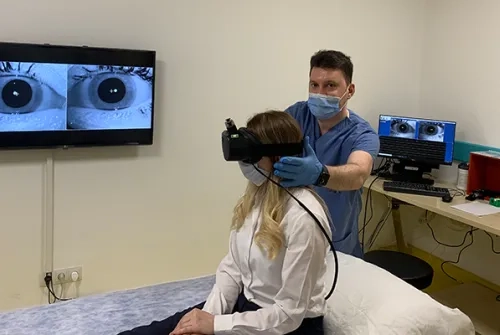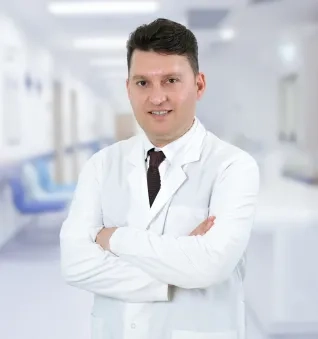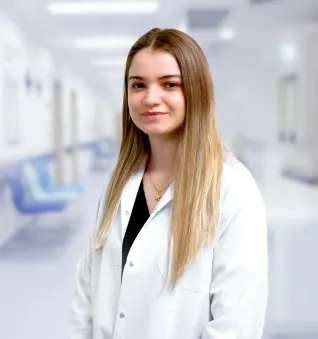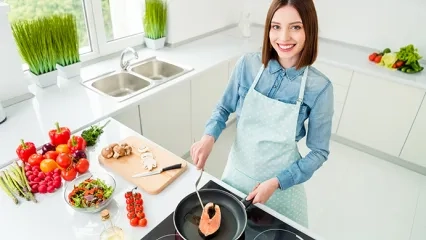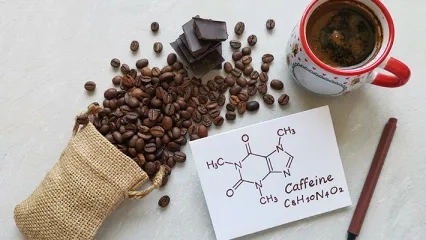Alo Yeditepe
Alo Yeditepe
Audiology
Modern technology is used in the Audiology Department of Yeditepe University Hospitals. With the test methods of audiology, both children and adults are evaluated in detail. Evaluation and rehabilitation of hearing and balance disorders are carried out with expert staff.
The hearing and balance tests performed in the Audiology Department of Yeditepe University Hospitals are as follows;
Hearing Tests
- Newborn hearing screening test (BERA)
- Clinical Otoacoustic Emission (TEOAE/DPOAE)
- Clinical ASSR (Auditory Steady-State Evoked Response)
- Clinical BERA (Diagnostic ABR/BERA)
- Child Audiometry (Behavior observation audiometry (BOA), Visual Reinforcement Audiometry (VRA), and Game audiometry)
- Audiological Evaluation (Pure-tone audiometry and speech audiometry)
- Tympanometric Examination (Tympanometry and Acoustic reflex tests)
- High-frequency audiometry
- High-Frequency Tympanometry (1000Hz): Used in children 6 months of age or younger.
- Eustachian Function Test
Balance Tests
VNG (Videonistagmography) test (Caloric test + Vestibular tests + Oculomotor tests)
VHIT (Video Head Impulse Test)
VEMP (Vestibular Evoked Muscle Potentials) test
Caloric vestibular test (ENG)
Rotational vestibular examination
Channelolite repositioning maneuver (Epley, Vannucchi, Gufoni, BBQ) (corrective maneuver)
What Is A Clinical Bera Test?
The Clinical Bera Test is an electrophysiological measurement performed to determine the level of hearing in children with hearing loss, especially infants. When applying this test, an acoustic stimulus is given to the ear of the child (or baby), and the electrical potential in the auditory nerve is measured with special electrodes affixed to the child's head. Thus, it can be understood whether the child hears the sound.
Who to Apply the Clinical Bera Test?
- The clinical Bera Test is applied to babies who fail hearing screening tests,
- Babies who have undergone hearing screening tests but have a risk factor (premature, more than 5 days of intensive care, phototherapy, febrile illness, or hearing loss in the relatives of the 1st degree),
- Children with speech problems and who cannot undergo audiological evaluation.
What to Consider Before Coming to the Clinical BERA Test?
For babies; the baby should be brought to the test without sleep and with at least 3 hours of fasting. They must not be put to sleep on the road or in the car. After being examined in the clinic, s/he will be expected to be fed with breast milk or formula and to sleep. If there are hours when the baby sleeps routinely during the day, the bera appointment can be made at those hours (Total test time, 90 minutes).
For children over the age of 1, especially children with speech retardation, who have difficulty sleeping during the day, a test can be performed on weekdays at 22.00 by contacting the clinic. In order to provide appropriate conditions for the test, the child must not sleep on the road, should have exerted effort during the day, and should be tired.
Are Clinical Bera Test Results Dependable?
The clinical BERA test is a method used in advanced diagnosis and is accepted as the gold standard all over the world. The test is objective and does not require patient participation. If it is carried out in appropriate conditions and by experienced specialists, the level of hearing of the baby (or child) is determined in such a way that there is no doubt. In addition, the results are supported by other tests (Clinical ASSR, Clinical Otoacoustic Emission, Free Field Audiometer)
Does the Clinical BERA Test Have Any Harm to the Baby?
Since the test is done in natural sleep (no medication is given), there is no harm. The electrodes used for testing are completely pediatric products and are a non-invasive procedure. No needles or incisions are applied to the body. Children with sleep problems can also be tested under general anesthesia and accompanied by an anesthesiologist at the request of the family.
What are the Other Commonly Used Names of the BERA Test?
Brainstem Evoked Response Audiometry (BERA), Auditory Brainstem Response (ABR), İşitsel Beyinsapı Cevabı (İBC), Brainstem Auditory Evoked Potantial (BAEP), Brainstem Auditory Evoked Response (BAER)
What Are Balance Tests (Vestibular Tests)?
Balance Tests are tests that help us understand whether the complaints of patients who apply to the clinic due to dizziness or balance disorder are caused by the inner ear (peripheric) or central (neurological). Eye movements resulting from stimulation of the vestibular system during the test are recorded with video glasses, which are extremely easy to use. As a result of the test, if Benign Paroxysmal Positional Vertigo (BPPV) is detected, the patient is rehabilitated by applying the correct maneuvers.
What is Videonistagmography (VNG) Test?
This test objectively measures, records, and reports abnormal eye movements caused by Benign Paroxysmal Positional Vertigo (BPPV), Vestibular Neuronitis, Internuclear Ophthalmoplegia (INO), Traumatic Brain Injury, and other peripheric and central (neurological) disorders. The VNG test has three main sections.
Oculomotor tests; In this section, while the patient follows the visual stimulus, problems, inaccuracies, or slowness from the brain to the vestibular system are evaluated.
Positional tests; The only objective symptom of vertigo is eye movements. In this section, it is recorded whether nystagmus, which is peripheric and/or central, occurs with the change of position of the head.
Caloric test (Eng Registered); The external auditory canal is irrigated with cold (24˚) and hot (48˚) air and the temperature of the fluids in the horizontal semicircular channels is changed. As a result, the patient feels dizzy and nystagmus develops. This test gives us information about both labyrinths (is there unilateral or bilateral loss of function?) and central compensation.
What is Video Head Impulse Test (vHiT)?
It is a technological device developed in recent years. With vHiT, the vestibular-ocular reflex (VOR) of each semicircular canal is evaluated separately. Normal VOR gain is close to 1.0. This rate will decrease in patients with unilateral vestibular loss (less than 0.7).
What is the Vestibular Evoked Muscle Potential (VEMP) Test?
In particular; It is used in the differential diagnosis of semicircular canal dehiscence, Meniere's disease early stage, and otolith organ-induced vestibular dysfunctions. In the presence of the third window in the cochlea, VEMP thresholds decrease, latencies shorten, and response amplitude increases. In otolith organ-induced vestibular dysfunctions, latency is prolonged, the amplitude is reduced, and asymmetry occurs between the two ears. In Meniere's disease, loss of response is observed on the affected side. However, airborne responses are more affected than bone-delivered responses.
”
See Also
- Causes of Hearing Loss
- Ringing in the Ears Does Not Mean Somebody Is Calling for You
- Hearing Health
- Do not Let Your Fear of Tampons Delay Your Nose Surgery
- 30-Year Imam Regains His Voice With Voice Therapy
- He Was Ashamed to Speak, and He Was Reborn with His New Voice
- Swimmer's Ear is A Summer Illness; Beware!
- Unexpected Causes of Hearing Loss
- Walking Problems of Children Might Indicate Vertigo
Alo Yeditepe

